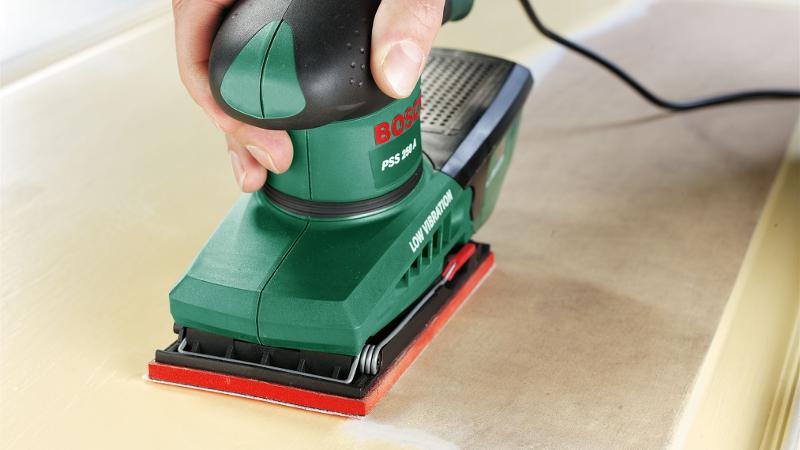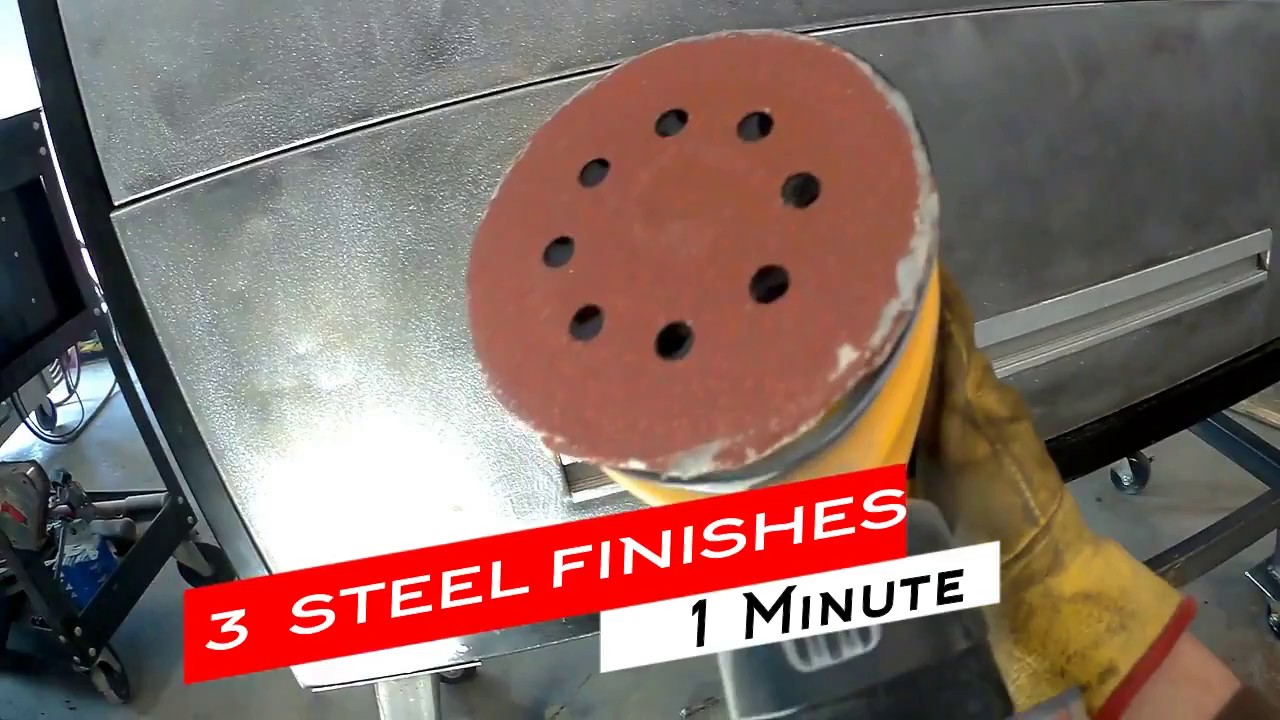So, you’re curious about whether or not you can use an orbital sander on metal. Well, the short answer is yes! But let’s dive a little deeper into the topic to give you a better understanding.
Using an orbital sander on metal can be a handy technique to remove rust, smooth out rough surfaces, or even prepare the metal for painting. But there are some important factors to consider before you start sanding away.
Firstly, you need to make sure you have the right type of sandpaper for the job. Using sandpaper with a grit suitable for metal will ensure effective and efficient sanding. Additionally, you’ll want to be mindful of the speed and pressure you apply while operating the orbital sander to avoid damaging the metal surface.
Now that you know the basics, let’s explore the dos and don’ts of using an orbital sander on metal, along with some helpful tips and tricks to achieve the best results. Get ready to unleash the power of your sander and transform your metal surfaces!
Discover the versatility of an orbital sander when working with metal. With its smooth sanding motion and variable speed control, an orbital sander can be used effectively on metal surfaces. The key is to use the appropriate grit sandpaper, starting with a lower grit to remove any rust or coatings, and gradually progressing to a higher grit for a polished finish. Just remember to wear protective gear and take necessary precautions for a successful metal sanding project.

Can You Use an Orbital Sander on Metal?
Metalworking and woodworking are two distinct crafts, each with its own set of tools. One tool that is commonly associated with woodworking is the orbital sander. This versatile tool is designed to remove material quickly and efficiently from wood surfaces, leaving them smooth and ready for finishing. But can you use an orbital sander on metal? In this article, we will explore the possibilities and limitations of using an orbital sander on metal surfaces.
Can You Use an Orbital Sander to Remove Paint from Metal?
Paint removal is a common task when working with metal, whether it’s to restore an old piece of furniture or to prepare a metal surface for a new coat of paint. When it comes to removing paint from metal, an orbital sander can be a useful tool. The random orbital motion of the sander combined with the right abrasive pad can effectively strip away layers of paint, revealing the bare metal underneath. However, it’s essential to take some precautions when using an orbital sander on metal surfaces.
Firstly, it’s crucial to choose the right type of abrasive pad for the job. For removing paint from metal, it’s best to use a coarse-grit abrasive pad that is specifically designed for metal surfaces. This will ensure that the paint is removed efficiently without damaging the metal. Additionally, it’s important to use the sander at a low speed to prevent excessive heat buildup, which can lead to discoloration or warping of the metal. Finally, it’s always a good idea to wear protective goggles and a dust mask when using an orbital sander on metal to protect yourself from flying debris and harmful dust particles.
Benefits of Using an Orbital Sander on Metal
Using an orbital sander on metal surfaces offers several benefits. Firstly, it allows for quick and efficient paint removal, saving both time and effort. The random orbital motion of the sander ensures that the paint is evenly removed from the surface, preventing the formation of streaks or uneven areas.
In addition to paint removal, an orbital sander can also be used to smooth out rough or uneven metal surfaces. This is particularly useful when working with metal that has been welded or soldered, as these processes can leave behind rough edges or weld spatter. By using the appropriate abrasive pad, an orbital sander can quickly and effectively smooth out these imperfections, resulting in a clean and polished surface.
Furthermore, an orbital sander is a versatile tool that can be used for a variety of tasks beyond paint removal and surface smoothing. It can be used for rust and corrosion removal, surface preparation before welding or painting, and even for creating texture or patterns on metal surfaces. Its ease of use and versatility make it a valuable addition to any metalworking toolkit.
Tips for Using an Orbital Sander on Metal
To ensure the best results when using an orbital sander on metal, here are some helpful tips to keep in mind:
- Choose the right abrasive pad for the job. Coarse-grit pads are suitable for paint removal, while finer-grit pads are better for surface smoothing.
- Use the sander at a low speed to avoid overheating the metal and causing damage.
- Keep the sander moving constantly to prevent the formation of grooves or uneven areas.
- Wear appropriate protective gear, such as goggles and a dust mask, to protect yourself from debris and dust particles.
- Clean the metal surface thoroughly after sanding to remove any residue or loose particles.
- Apply a protective coating, such as a primer or paint, after sanding to prevent corrosion or rust formation.
- Practice on a scrap piece of metal before working on a larger or more visible surface to familiarize yourself with the tool and technique.
Can an Orbital Sander Replace a Grinder for Metalworking?
While an orbital sander can be a useful tool for certain tasks involving metal, it is not designed to replace a grinder in metalworking. Grinders are specifically designed for heavy-duty metalwork and offer higher power and speed compared to orbital sanders. They are better equipped to handle tasks such as cutting, shaping, or deburring metal, which require more aggressive material removal.
So, while an orbital sander can be a valuable tool in a metalworking toolkit, it should be seen as a complementary tool rather than a direct replacement for a grinder. Each tool has its own strengths and limitations, and understanding their differences will help you choose the right tool for the job at hand.
Conclusion
Using an orbital sander on metal surfaces can be a practical solution for tasks such as paint removal and surface smoothing. By choosing the right abrasive pad, using the sander at a low speed, and taking proper safety precautions, you can achieve excellent results. However, it’s important to note that an orbital sander is not a substitute for a grinder in more heavy-duty metalworking tasks. Understanding the strengths and limitations of each tool will enable you to make informed decisions and achieve the best possible results in your metalworking projects.
Can You Use an Orbital Sander on Metal?
Yes, you can use an orbital sander on metal, but with caution.
- An orbital sander is not the best choice for metal, as it may not provide the desired results.
- A belt sander or a grinding wheel is more suitable for metal sanding tasks.
- If you use an orbital sander on metal, use a low grit sandpaper to remove paint or rust.
- Take proper safety precautions, such as wearing protective gear and keeping the work area clean and well-ventilated.
- Always follow the manufacturer’s instructions and recommendations.
Frequently Asked Questions
Welcome to our FAQ section on using an orbital sander on metal. If you’re wondering about the possibilities and limitations of using an orbital sander on metal surfaces, you’ve come to the right place. Below, we have provided answers to some commonly asked questions. Read on to learn more!
Can an orbital sander be used on metal?
Yes, you can use an orbital sander on metal. However, it’s important to note that orbital sanders are primarily designed for woodworking projects. While they can be used on metal surfaces, they may not be as effective as other sanding methods. Metal is harder and requires more aggressive sanding than wood, so a specialized sander would be more suitable for this purpose.
If you do decide to use an orbital sander on metal, make sure to choose the right type of abrasive sandpaper. Look for sandpaper specifically designed for metal or ones with a coarse grit. Additionally, keep in mind that an orbital sander may not be able to remove deep scratches or rust from metal surfaces as effectively as other sanding tools.
What are the limitations of using an orbital sander on metal?
While an orbital sander can be used on metal surfaces, it has some limitations in this application. Orbital sanders are generally better suited for sanding wood due to their lower speed and less aggressive sanding motion. Metal, being harder and more durable than wood, may require more aggressive sanding techniques, which an orbital sander may not provide.
Furthermore, an orbital sander may struggle to sand curved or irregular metal surfaces effectively due to its circular sanding pattern. For such surfaces, it may be more effective to use a different type of sander, such as a belt sander or angle grinder, which can conform to the contours of the metal and provide more precise sanding.
Are there any safety precautions to consider when using an orbital sander on metal?
Yes, safety precautions are important when using an orbital sander on metal surfaces. Always wear personal protective equipment (PPE) such as safety goggles, a dust mask, and ear protection to safeguard yourself from metal shavings, dust, and noise. Metal particles can be sharp and potentially hazardous, so take necessary precautions.
Additionally, be mindful of the heat generated when sanding metal. Excessive heat can cause the metal to become hot, which could pose a burn risk. Keep the sander moving and avoid concentrating too much sanding in one spot to prevent overheating.
Can an orbital sander be used to remove rust from metal surfaces?
An orbital sander can be used to remove surface rust from metal surfaces, but its effectiveness may vary. For light surface rust, an orbital sander with a coarse-grit sandpaper can help remove the rust and restore the metal’s smoothness. However, for heavy or deep rust, a more aggressive sanding method or specialized rust remover may be necessary.
It’s important to note that repeated sanding may remove the rust, but it can also remove the protective layers on the metal surface. After sanding, consider applying a rust inhibitor or a protective coating to prevent future rust formation on the metal.
What are the alternative sanding methods for metal surfaces?
If an orbital sander is not the ideal tool for your metal sanding needs, there are alternative sanding methods you can consider. Belt sanders, which have a continuous loop of sandpaper, are better suited for aggressive sanding on metal surfaces. Angle grinders with sanding discs are also commonly used for heavy-duty metal sanding and shaping tasks.
For smaller or intricate metal surfaces, hand sanding with sandpaper or using sanding blocks can provide more control and precision. Ultimately, the choice of sanding method depends on the size, shape, and condition of the metal surface you need to sand.

Summary
You can use an orbital sander on metal, but you need the right type of sandpaper. Look for sandpaper with a high grit, like 60 to 80, to effectively smooth out metal surfaces. Remember to wear protective goggles and a mask to keep yourself safe from metal dust and sparks.
However, keep in mind that orbital sanders are primarily designed for wood, so they might not be as effective on metal. If you have a lot of metal to sand, it may be better to invest in a specialized tool like a belt sander or a grinder. Always prioritize safety and choose the right tool for the job!
